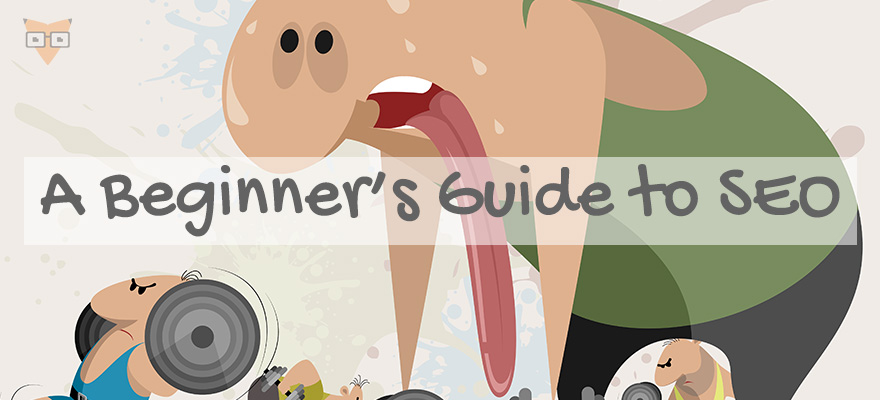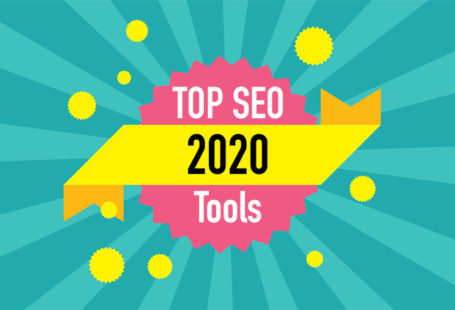Search engine optimization is becoming increasingly important to ensure your website is found. But do you know what exactly SEO is and how it works? Nexunom presents this beginner’s guide to SEO.
Search engines
To properly understand SEO, you have to first understand search engines and how they work. There are two main things search engines work to accomplish. First, search engines crawl the web to build an index. From there, the search engine will use this information to provide a list of websites for the user, ranked by which are most relevant to the user’s search.
The search engines crawl the website using the website’s links. They look at the code on each page, deciphering what it is and how it should be indexed. Then, that information is saved for when users make search queries.
Mathematical algorithms are then employed. This allows for information that is relevant and popular to be shown in a search query. Search engine optimization is intended to impact both factors that play a role in whether your website comes up in a search – you may have relevant information, but if your site isn’t popular, you may not be found easily. Search engines assume that the more popular a site is, the more likely it is to contain pertinent and relative information.
So, how do you ensure your site gets seen? Let’s go to the source directly to see what they have to say. Google is the most trafficked search engine, processing 40,000 search queries every second.
Google Webmaster Guidelines
Basic principles:
- Make pages primarily for users, not for search engines.
- Don’t deceive your users.
- Avoid tricks intended to improve search engine rankings. A good rule of thumb is whether you’d feel comfortable explaining what you’ve done to a website that competes with you, or to a Google employee. Another useful test is to ask, “Does this help my users? Would I do this if search engines didn’t exist?”
- Think about what makes your website unique, valuable, or engaging. Make your website stand out from others in your field.
But, how can you translate what Google recommends into real results?
Learn how people interact with search engines.
If you want to have the most success with your SEO program, it’s important to know how your average consumer is going to interact with a search engine. To do that, you must first determine who your target audience is and what they are looking for. Then, build your program around your users, and not just the search engines.
It is imperative for companies to put themselves into the shoes of their customers or potential customers. If a customer searches for something and lands on your site, will he or she be satisfied with what is found? The search engine’s main job is to deliver relevant content to the user. So, does your website help the search engine do that?
In one March 2017 study, 80% of respondents said they had used a search query to find a local business or product in the week leading up to the survey. 87% had done a search in the month prior. Not only that, but users find search engine results to be trustworthy and accurate. So, if you aren’t being found in searches, you may be missing out on a lot of potential business.
Let’s take a look at what makes a search engine friendly site.
It’s important that your site be optimized for the user – that means it must be attractive, easy to navigate, and have relevant information. But, it also has to be easy for a search engine to crawl in order to ensure you can be found easily. So, how can you accomplish both?
HTML text is still king as it is the easiest for search engines to find and crawl. If your site is loaded with images, Flash files or Java apps, you may be ignored by the search engines. You can, however, work around these drawbacks by ensuring you utilize a few SEO techniques. Alt images give search engines a text description of the images found on the page, and you can also use text to supplement Flash and Java components, as well. If you have audio or video on your site, be sure to also include a transcript of that content so it can be indexed properly.
The links in your site must also be created in a way that allows the search engines to crawl them. If your navigation is created in a way that a search engine can’t access, those pages may be missing out on being shown on the search engines.
There are tools available for you to be sure your site is indexed properly for search engines. Google has a free tool you can use, and there are many other free tools available, too.
Search engines have great abilities, but there are limitations, too, which is why a strong SEO program can ensure your site gets seen by users.
No one single factor will mean success.
It’s important to remember that the components of any search engine optimization program must work together to achieve ideal results. That means you can’t simply make sure your images are all properly indexed and expect to see your rankings soar. Likewise, having lots of links won’t help if they aren’t of good quality. And it doesn’t matter how fantastic your HTML title is if your page doesn’t deliver relevant, quality content.
First, be sure each page is properly set up for success. Is your website both relevant, and the content is of good quality? Are you using enough HTML text to ensure the search engine crawlers know what is on the page? You can control what is on the pages of your website to ensure it’s not only friendly to users, but to search engines as well.
But, search engines, and the companies that run them, are smart enough to know that they can’t rely on websites by themselves to ensure users get the best search experience. Some websites may conflate their relevance to trick the search engine. These are called “black hat” SEO techniques, and will result in pages getting ranking penalties, or in some cases, being banned altogether.
Black hat tactics are meant to manipulate how a search engine interprets and understands the true relevance of a site, and should be avoided. Let’s take a look at some of the top ones to be sure your website isn’t employing them.
- Keyword misuse. Don’t use keywords that don’t pertain to anything related to your site, just because those keywords are popular. You may think you will gain extra hits, but you’ll end up hurting your site.
- Keyword stacking or stuffing. You may think using your keywords over and over again is helpful, but if it reads like gibberish to a real person, it will end up as the same to the search engines. Use your keywords naturally in real, complete sentences or phrases.
- Cloaking. This presents one site to users, but something completely different to search engines. Instead, be honest and create pages that a user will want to use, based on what the search engine description is. If a user searches for one term and your site comes up, be sure the user will find relevant information on what they searched for once they click on your site.
- Duplicate content. Be sure each page of your site has original content that isn’t duplicated anywhere else.
- Bait and switch. This is a creative, and deceptive, way to drive more users to your site. It involves creating a page that will rank well on Google, then once it ranks high, switching it out for another product or different information. Not only will you trick Google, you may just find your site banned.
So, what will lead to a successful SEO program for you?
If you haven’t heard it before, you’ll hear it often when looking at how to build a successful SEO program – content is king. If you are delivering high quality, relevant content that your users actually want, you’re already one step ahead. You need to be sure your information stands out from the crowd, and is appealing enough that users want to take the time to read it.
You also need to make sure that the keywords you want the search engine to crawl are found in your content. It’s always good to take inventory of your content and be sure you’re not only using the keywords, but that you are using them naturally. There is no magic formula to determining how often a keyword should appear, but it is important that when they do, they seem natural.
Keep your content fresh. We know you aren’t going to update your website every day just to ensure that happens, but this is where a relevant blog can come in handy. This gives you the opportunity to write up-to-date content based on what is currently happening, and shows the search engines you’re committed to creating fresh content.
After you know you have the best content in place, it’s time to move on to the other factors that Google and other search engines will use. Search engines crawl the websites for the information needed to build the results of search queries. If your site isn’t crawlable, or the relevant pages aren’t, you won’t show up in the search results. A good site map can help ensure your site can be easily crawled.
Did you know that today, more searches are happening on mobile devices than on laptops or desktops? Having a mobile-friendly site is more important than ever. And if your site is fast, that will give you a little bump in ranking over one that takes forever to load.
Be sure your HTML is working positively for you. The most important factors to look at are HTML title tags, meta description tags, structured data, and header tags. These are all important because they provide the search engine with crucial information. Search Engine Lands SEO Guide likens them to pieces of a book – the HTML title tags are like titles. They should be unique and provide enough description to gain an understanding of what it is about. Meta description tags then are like the description of the book found on the book jacket. Use these to decide how you’d ideally like search engine to describe the page. Structured data is the additional information that rounds out the information to helps the search engine better understand the content and structure of the page. Header tags can identify certain sections of site pages – they should be used to make content easier for a user to locate, as well as a search engine.
Link-building is a major off-the-page factor that is used in rankings by search engines. But, not just any link will do. Just like your content, be sure your links are good quality and make sense. The anchor text used in the link will also influence how the search engines see you, so whenever possible, be sure you are positively influencing that text. But it’s important to remember that one quality link may pay off much more than 100 poor quality links. Social media also plays a factor in this, because while search engines may not use these sites directly in ranking, social media shares and likes can also lead to quality links, which do directly impact rankings.
In short, if you want SEO to work for you, be sure you’re providing the information your customers or potential customers are looking for, in a way that makes it as easy as possible for search engines to find it. Find the right keywords; craft content that is relevant, paints you as an authority on the topic, and that properly uses the keywords; optimize your HTML text to work for you; create a quality link-building program; and avoid black hat SEO techniques.
Where do you go from here?
By now, your head may be spinning with all the information we’ve shared. We’ve only briefly touched on the basics of search engine optimization, but the good news is, the SEO specialists at Nexunom are here to help you. You don’t need to navigate these waters on your own. To learn more about how Nexunom can help you, call us today at 844-SEO-FOXY.
-
Online Marketing Expert, MIB Graduate From HEC Montréal and Serial Entrepreneur. Founder/Owner of Nexunom.com, ReviewTool.com, Allintitle.co and Tavata.com. Working in Digital Marketing Field Since 2008.
View all posts






